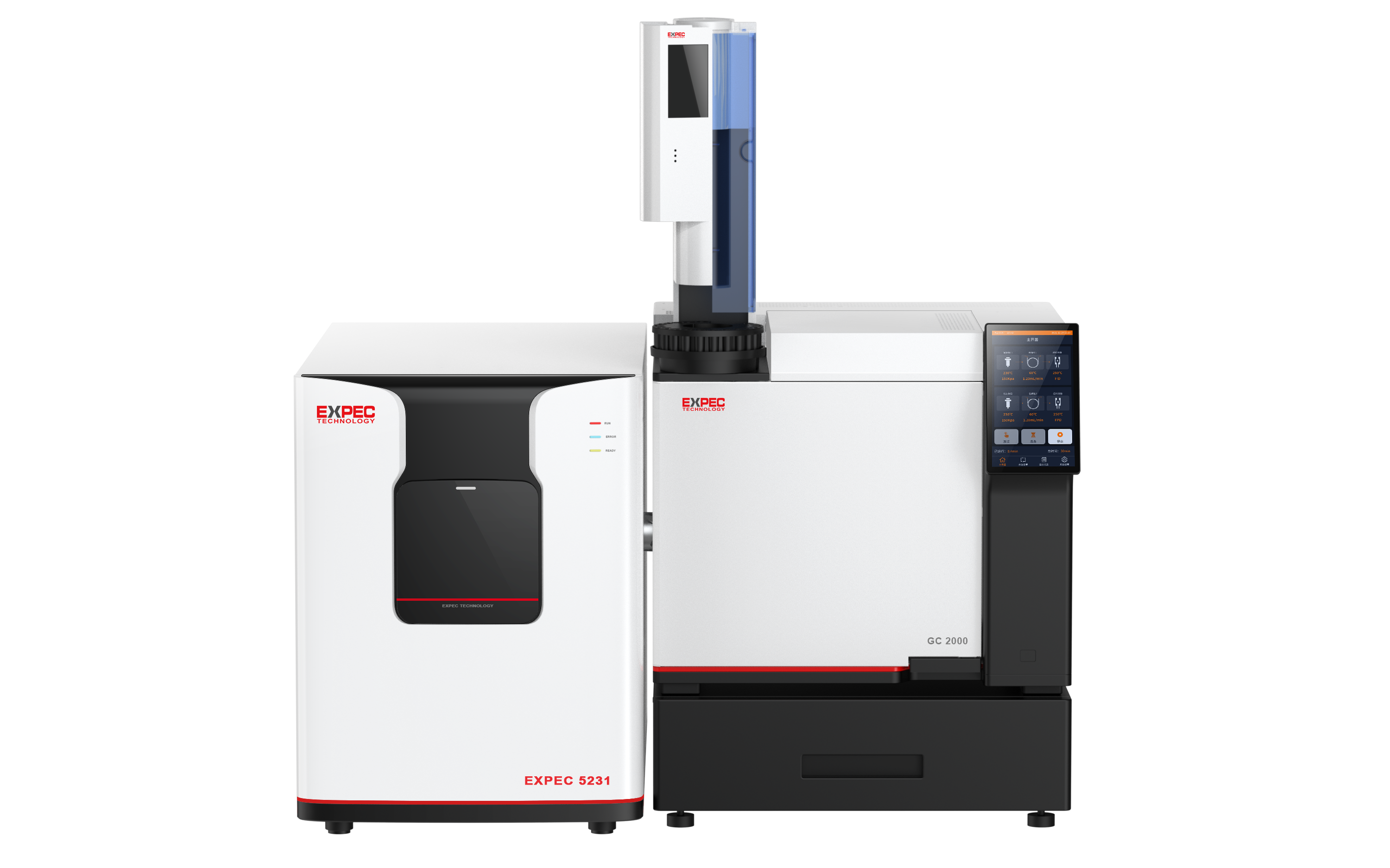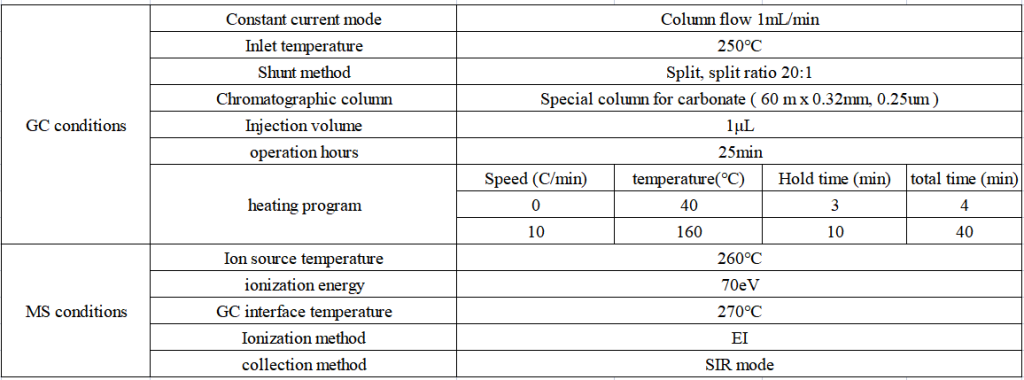The electrolyte in lithium-ion batteries is prepared from high-purity organic solvents, electrolyte lithium salts, additives, etc., and is the carrier of ion transmission in the battery. The performance of the electrolyte plays a decisive role in the main performance of the lithium battery, such as the operating temperature, specific energy, cycle efficiency, and safety. Carbonate solvents are organic solvents commonly used in electrolytes at this stage, including ethylene carbonate (EC), dimethyl carbonate (DMC), diethyl carbonate (DEC), ethyl methyl carbonate (EMC), propylene carbonate (PC), etc., electrolyte additives include vinylene carbonate (VC), fluoroethylene carbonate (FEC), vinylene carbonate (VC), fluorobenzene (FB), etc. The triple quadrupole can eliminate the interference of the complex components of the electrolyte, efficiently screen out substances such as carbonates and additives, and has good selectivity, sensitivity and stability, and can complete the precise detection of various carbonate solvents and additives in the electrolyte . This application center uses a triple quadrupole GC/MS system to analyze common carbonate solvents and additives in battery electrolytes, showing good linearity, sensitivity and reproducibility results.
Keywords: GC-MS/MS, chemical industry, lithium battery, lithium battery electrolyte, carbonate solvent, electrolyte additive
Experimental part
Instrument
Table 1 Gas Chromatography - Triple Quadrupole Tandem Mass Spectrometer

Table 2 Gas chromatography-triple quadrupole tandem mass spectrometer parameters

Reagents and Standards
Standard: Tris(trimethylsilyl)phosphate, epoxybutylene, dimethyl carbonate, fluorobenzene, ethyl propionate, ethyl methyl carbonate, diethyl carbonate, propyl propionate, vinylene carbonate Esters, fluoroethylene carbonate, ethylene carbonate, propylene carbonate, vinyl sulfate, 1,3-propane sultone, and adiponitrile standards were purchased from Aladdin.
Reagent: dichloromethane, chromatographically pure.
Standard solution preparation
Prepare the carbonate solvent and additive standard with dichloromethane to make mixed standard solution of 0.5, 1, 2.5, 5, 20, 25, 50 μg/mL, and wait for GC-MS/MS detection.
Linearity and Detection Limits
The linear coefficients are all greater than 0.998, and the TIC diagrams of the carbonate solvent and additive compounds are shown in Figure 2.
The concentration when the signal-to-noise ratio (peak-to-peak) is equal to 3 is used as the detection limit, and the concentration when the signal-to-noise ratio (peak-to-peak) is equal to 10 is used as the limit of quantification. It is calculated that under the condition of split ratio 20:1, the detection limit of the instrument is lower than 0.145 μg/mL, and the test results are shown in the table below.

Fig.2 TIC diagram of carbonate solvent and additive compound
Table 3 Carbonate solvent and additive curve information and detection limit test results

Stability
Dichloromethane prepared 1 μg/mL carbonate solvent and additive mixed standard solution, and injected 7 consecutive samples. The RSD values of the peak areas of each compound were all less than 5%. The test results are shown in the table below.
Table 4 Stability of carbonate solvents and additives at 1 μg/mL


Epilogue
This article uses a GC/MS system to develop a method for testing carbonate solvents and additives in battery electrolytes. The 15 compounds in the carbonate solvent and additives had good linearity, and the linear correlation coefficients were all greater than 0.998. After 7 consecutive injections of the mixed standard solution of 1 μg/mL, the peak area RSDs of the 15 compounds were all less than 5%. Under the condition of 20:1 split ratio, the detection limit of the instrument was lower than 0.145 μg/mL. This method can be used to analyze 15 kinds of carbonate solvents and additive compounds in battery electrolyte, with a wide linear range and excellent reproducibility and sensitivity. This method is suitable for the analysis of carbonate solvents and additives in battery electrolyte.
Appendix
Equipment and Consumables Solutions
1. EXPEC 5231 system standard configuration details

2. Standard products


